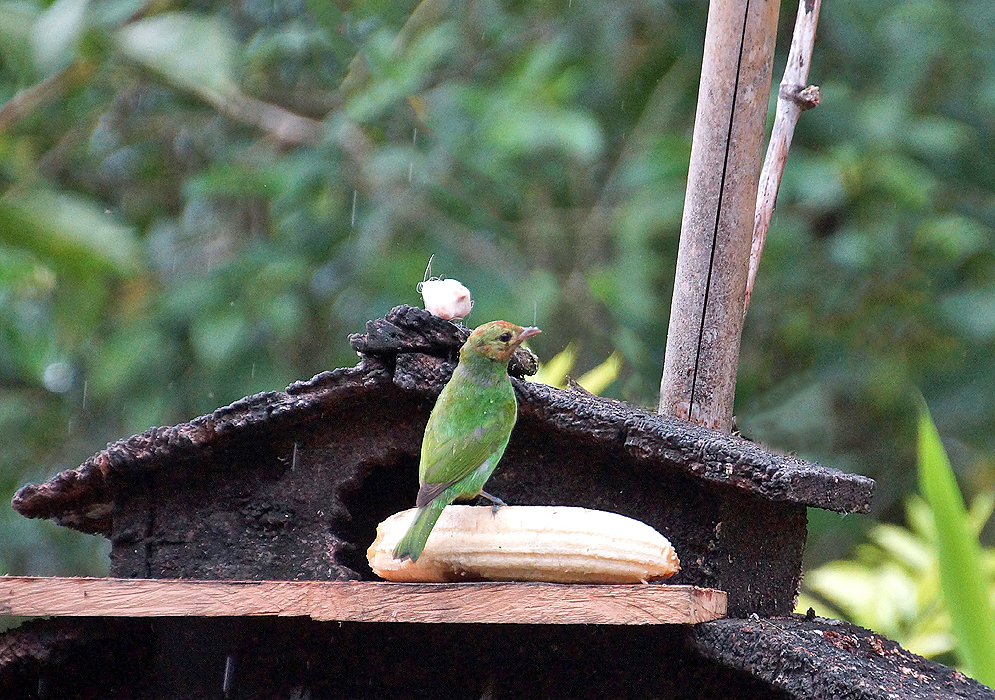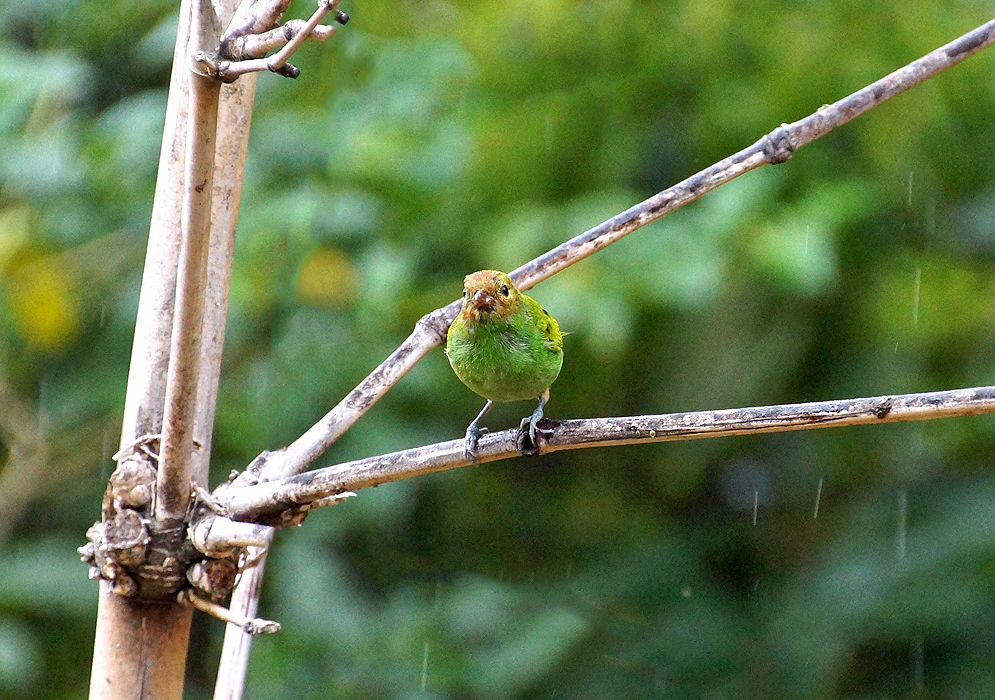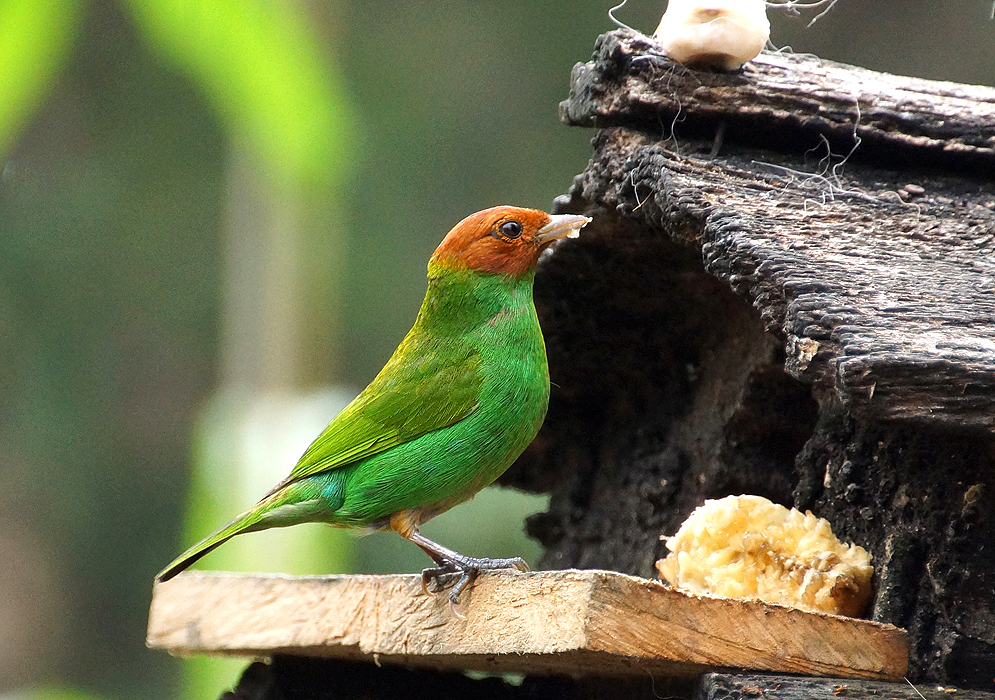This post has 11 Simple Fields-fields attached. Show fields.

The Bay-headed Tanager is a medium-sized bird from the tanager family. This species is a resident breeder in a wide range spanning Costa Rica, Panama, and South America. There are nine recognized subspecies, each with distinct geographical ranges. These subspecies include T. g. bangsi in Nicaragua to west Panama, T. g. deleticia in east Panama to central and west Colombia, T. g. nupera in southwest Colombia, west Ecuador, and northwest Peru, among others.
Adult Bay-headed Tanagers are approximately 5.5 inches long and weigh around 0.69 ounces. The plumage varies across subspecies, but the nominate race T. g. gyrola is predominantly green, with a chestnut head, a blue or green belly, and a thin gold collar on the hind neck. Both sexes have similar appearances, though immatures are duller with chestnut-flecked green heads. This species is found in forests, particularly in wetter areas, and builds bulky cup nests in trees. The typical clutch size is two brown-blotched white eggs, with the female incubating them for about 13–14 days, and the chicks taking another 15–16 days to fledge. Bay-headed Tanagers are social birds, primarily eating fruit, often swallowed whole, and insects, which they mostly pick from the underside of branches. The global population of the Bay-headed Tanager is estimated to be above 5 million mature individuals and is categorized as "Least Concern". Photographed in the Sierra Nevada de Santa Marta, Colombia.





